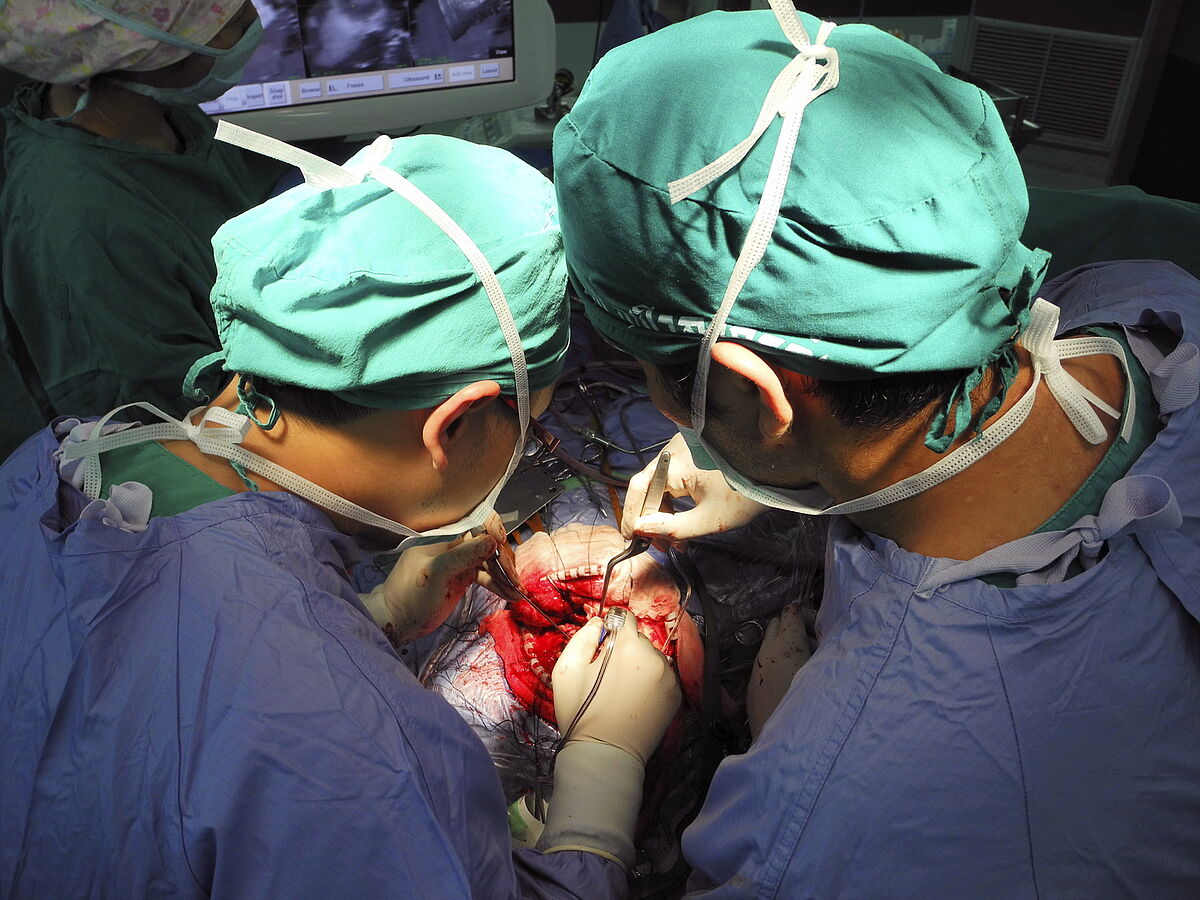Researchers from the Max Born Institute for Nonlinear Optics and Short Pulse Spectroscopy (MBI) were involved in the development of a table-top solid-state laser system that could cut brain tissue with unprecedented precision. The achievement is a result of an interdisciplinary EU project that involved partners from seven European countries.
The idea goes back to an experiment performed in 1999: Scientists from the Vanderbilt University (Nashville, TN) removed a brain tumor from a patient with a free-electron laser at a wavelength of 6.45 microns. This wavelength in the mid-infrared spectral region had previously been identified in a number of preliminary experiments with different soft tissues as the most suitable one for such surgical operations. That the method, however, has not found its way into the operating rooms has a simple reason: the free-electron lasers are huge and expensive accelerator-based facilities not suitable for routine use in clinical conditions. Unfortunately, the desired wavelength could be generated so far only with such lasers which are tunable in a broad spectral range, or in other words, one can select almost any arbitrary wavelength. On the contrary, solid-state or gas lasers, emit normally a well defined wavelength which depends on the active medium employed. In laser surgery, wavelengths of about 2, 2.8 and 10.6 microns are currently in use.
"There were so far no compact and reliable solid-state lasers emitting at the desired mid-infrared wavelength," said Dr. Valentin Petrov from MBI, coordinator of the consortium. The new laser emits short pulses exactly at 6.45 microns with a repetition rate of 100-200 Hz which ensures the targeted average power of over 1 Watt. The greatly reduced collateral damage at this wavelength is due to the combined absorption of water and resonant laser heating of non-aqueous components (proteins). The penetration depth at this wavelength is on the order of several microns, which is comparable to the cell size, and is therefore close to the optimum value, not achievable by any other state-of-the-art lasers.
2008, the EU-funded project MIRSURG was launched with the objective to close up the gap for diode-pumped solid-state lasers in the mid-infrared spectral range around 6.45 microns. At the MIRSURG final meeting in spring 2012 in Saint-Louis, France, the project team presented a rather compact all-solid-state prototype that fits on a table-top. The desired optical wavelength of 6.45 microns is generated by frequency conversion. A laser beam with a wavelength near 2 microns is converted to the mid-infrared by the use of nonlinear optical crystals.
The challenge for the researchers was to achieve simultaneously all the most appropriate but still technically feasible parameters for soft tissue ablation. They managed to combine the desired wavelength with high single pulse energy of more than 5 millijoules, short pulse duration of about 30 nanoseconds and good focusing capability. The repetition rate, long term stability and reliability of the entire laser system seem ideally suited for practical surgical applications.
The project partners of MIRSURG intend to further optimize the new table-top laser, assess its tissue ablation capabilities and, possibly within a follow-up project, demonstrate real solid-state laser surgery at 6.45 microns. "I hope that in the near future such a laser could become a practical surgical tool in every specialized operating room," said Petrov.
Partners in the MIRSURG project:
• Max-Born-Institute for Nonlinear Optics and Short Pulse Spectroscopy, Germany
• Thales Research and Technology, France
• Institute of Photonic Sciences, Spain
• Lisa Laser Products, Germany
• French-German Research Institute of Saint-Louis, France
• Bright Solutions, Italy
• Royal Institute of Technology, Sweden
• Euroscan Instruments, Belgium
• The University Medical Center Utrecht, Netherlands
www.mirsurg.eu
Fig. 1: Tissue ablation with the novel all-solid-state light source at 6.45 microns based on frequency conversion in comparison with two clinical lasers, a 2.79 micron Erbium solid-state laser and a 10.6 micron carbon dioxide gas laser. (courtesy of UMC)
Kontakt:
| Dr. Valentin Petrov, Tel.: 030 6392 1281 Max-Born-Institut für Nichtlineare Optik und Kurzzeitspektroskopie (MBI) E-Mail: petrovmbi-berlin.de |


